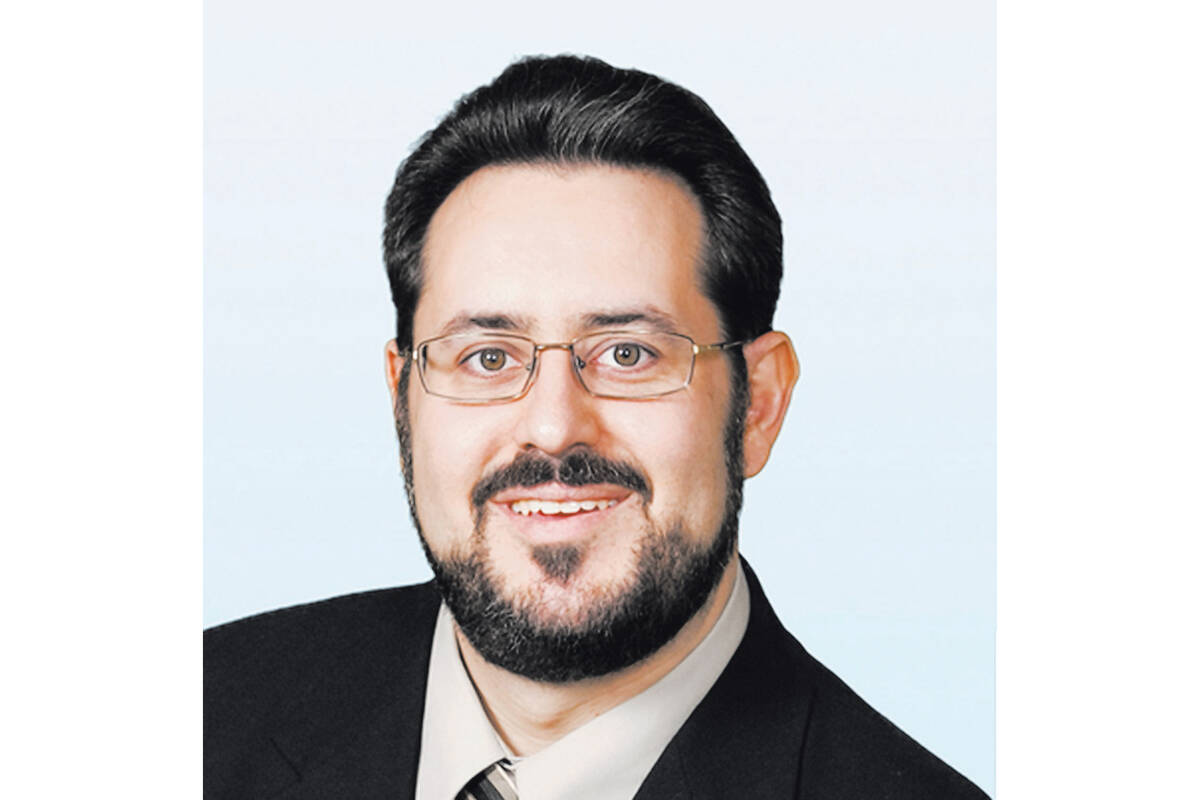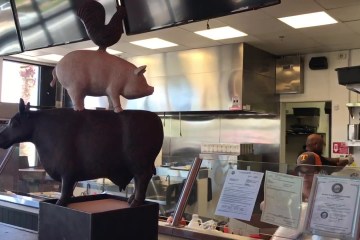Southern Nevada’s economy is facing challenges in the hospitality sector and in stagnant employment and taxable sales growth, but there are signs that stronger growth is on the horizon, according to a new report from Colliers.
John Stater, the research manager for Colliers, said unemployment in Las Vegas was 5.6 percent in August 2025, down from 6.1 percent one year ago when it was the highest rate recorded in Southern Nevada since 2021.
From August 2024 to August 2025, employment in Southern Nevada decreased by 100 jobs to 1,140,400 jobs, representing 0.0 percent annual growth.
Job growth was strongest in the other services (2.6 percent), professional and business services (1.7 percent), and leisure and hospitality (0.9 percent) sectors.
Visitor volume in Las Vegas is down about 8 percent for the year, lower than the average growth rate of 3.5 percent in 2024. While gaming revenue was up slightly, year-over-year, room occupancy has averaged 82 percent year to date, lower than the 84.1 percent average occupancy in 2024, Stater said.
“At the end of 2024, Southern Nevada’s economy appeared to be stable, the primary concern being slow employment growth,” Stater said. “A few months into 2025, a new concern, the health of the hospitality sector, surfaced. Several causes have been suggested for the unusual decrease in visitor volume, including reduced overseas travel, failure to capture the young adult demographic and pricing on the Las Vegas Strip. The most likely culprit is a concern about the overall economy and personal concerns about debt, income growth and inflation.”
Despite that, Stater said Southern Nevada’s hospitality sector has not completely evaporated. An 8 percent decrease in visitor volume is not a welcome statistic, but the valley has also seen a slight increase in gaming revenue and a small increase in convention attendance.
“Southern Nevada lost 100 jobs between August 2024 and August 2025; not great, but also not the end of the world,” Stater said. “Southern Nevada’s economy is facing challenges in the hospitality sector and in stagnant employment and taxable sales growth, but there are signs that stronger growth is on the horizon. We think as the national economy improves, these numbers will turn around locally and produce stronger demand for commercial real estate moving forward.”
Commercial real estate investment sales volume in the first three quarters of 2025 was $1.55 billion in 164 sales totaling 7.03 million square feet. The average price per square foot for commercial property was $220.62, a 15.2 percent decrease from one year ago. The overall cap rate for commercial space was 6 percent, Stater said.
Annual investment sales volume grew, year over year, by 372.5 percent for industrial properties, 242.6 percent for shopping centers, 4.2 percent for medical office properties, 3.5 percent for professional office properties and — 2.3 percent for single-tenant retail, Stater said.
INDUSTRIAL
New industrial completions totaled 1.5 million square feet this quarter. This was lower than one quarter and one year ago. The largest share of new completions was in the warehouse/distribution sector, followed by light distribution. The southwest submarket had the largest inventory expansion this quarter. Projects delivered this quarter were 47.5 percent pre-leased, a significant improvement over one quarter ago. The valley had 16.5 million square feet of industrial space in active development, 7 million square feet of which has gone vertical. A total of 5.2 million square feet is scheduled for completion over the next four quarters, with 30.4 percent of that space pre-leased, down from pre-leasing one quarter ago, Stater said.
Net absorption in the third quarter of 2025 was 988,218 square feet. This was higher than one quarter ago and represented the second consecutive quarter of increased net absorption, Stater said.
Warehouse and distribution space had the highest net absorption this quarter at 1,192,866 square feet, followed by light industrial space at 97,277 square feet. The valley’s lowest net absorption was in light distribution space at -347,760 square feet, Stater said.
The business sectors most active in leasing space over the past four quarters in Southern Nevada were transportation and warehousing (23 percent), professional and business services (17.1 percent), wholesale (14.6 percent), manufacturing (11 percent) and construction (7.1 percent) sectors, Stater said.
Local companies took 51.1 percent of the leased square footage tracked over the past four quarters. Companies headquartered in the Southeast U.S. took 12.5 percent of the space occupied, followed by the Southwest at 11.1 percent and the Midwest at 7.9 percent, Stater said.
Lower lease activity by non-local companies is a factor in the lower net absorption rates the market has recently experienced, Stater noted.
On leases signed over the past 12 months, rent increases averaged 4 percent per annum, equal to the previous 12-month period. Free rent averaged 2.8 percent of the lease term, up slightly from the previous period. The average tenant improvement allowance was $9.43 per square foot, down from the previous period, Stater said.
Industrial vacancy increased to 10.1 percent this quarter. Pre-leasing on newly completed projects increased to 47.5 percent this quarter, below the levels seen over the past five years but an improvement over recent quarters. The northwest submarket had the valley’s lowest vacancy rate at 1.8 percent, while the highest vacancy rate was 60.2 percent in the Apex submarket, Stater said.
The weighted average asking rental rate for industrial products in Southern Nevada was $1.06 per square foot, higher than one quarter ago, but lower than one year ago. The recent decreases in asking rates were indicative of a landlord reaction to the increasingly competitive industrial environment, Stater said.
Space available for sublease increased this quarter to 1.25 million square feet from 1.09 million square feet one year ago. North Las Vegas had the most space available for sublease in the market, at 393,871 square feet, Stater said.
“The industrial market’s demand problems did not appear as suddenly in 2025 as they did in 2008,” Stater said. “Signs of weakening demand began to appear in 2023, and the potential for problems was always there due to the reliance on bulk warehouse occupiers for much of the net absorption that Southern Nevada enjoyed over the past five years. While vacancy is elevated compared to past years, we are seeing landlords and developers react to this new industrial environment.”
Developers are drawing down their construction pipeline, and there are some shifts from distribution products to light industrial, incubator and flex products, Stater said. For their part, landlords are decreasing asking rental rates in an attempt to stimulate demand and hold onto existing tenants, he added.
“Demand for industrial product, as measured by net absorption, has increased for two consecutive quarters after hitting a recent low in the first quarter of 2025,” Stater said. “Pre-leasing of properties now under construction was higher in the third quarter than in previous quarters. This points to a nascent recovery in the industrial market.”
OFFICE
There were no new office completions this quarter, the fourth consecutive quarter without office inventory expansion. The last quarter that saw new office completions was the fourth quarter of 2024, when office inventory increased by 75,035 square feet, Stater said.
Southern Nevada had 286,509 square feet of office space under construction in the third quarter, higher than one year ago. A total of 167,009 square was scheduled for completion over the next four quarters, with 9.3 percent of that space being pre-leased, Stater said.
Net absorption in the third quarter of 2025 was 18,113 square feet. This was lower than one quarter ago, but higher than one year ago when net absorption dipped into negative territory, Stater said.
Class C office space had the highest net absorption this quarter at 111,331 square feet while class A and B office had negative net absorption of -31,610 square feet and -61,608 squarefeet,respectively, Stater said.
Net absorption was positive in the southwest, west central and North Las Vegas submarkets this quarter and negative in all others.
The businesses that were most active in leasing space over the past four quarters in Southern Nevada were in the transportation and warehousing (23 percent), professional and business services (17.1 percent), wholesale (14.6 percent), manufacturing (11 percent) and construction (7.1 percent) sectors, Stater said.
Local companies took 60.1 percent of the leased square footage tracked over the past four quarters. Companies headquartered in the Southwest U.S. took 13.9 percent of the space occupied, followed by the Mountain West and the Midwest at 5.8 percent. Lower lease activity by non-local companies is a factor in the lower net absorption rates the market has recently experienced.
On leases signed over the past 12 months, rent increases averaged 3.1 percent per annum, 0.1-point lower than the previous period. Free rent averaged 2.6 percent of the lease term, down from the previous period. The average tenant improvement allowance was $21.56 per square feet down from the previous period.
Office vacancy decreased to 11.9 percent this quarter from 12 percent at midyear. The North Las Vegas submarket had the valley’s lowest vacancy rate at 0.9 percent, while the highest vacancy rate was 29.8 percent in the east Las Vegas submarket, Stater said.
The weighted average asking rental rate for office product in Southern Nevada was $2.63 per square foot, even with one quarter ago, but lower than one year ago. The valley’s highest asking rental rate was in the southwest submarket, at $3.20 per square foot, followed by the northwest submarket at $2.86 per square foot and the airport at $2.71 per square foot, Stater said.
Space available for sublease decreased this quarter to 648,052 square from 836,832 square one year ago, a good sign for the overall health of the valley’s office market, Stater said. West central had the most space available for sublease in the market at 279,921 square feet.
“Overall, Southern Nevada’s office market has been less volatile in 2025 than in 2024,” Stater said. “Net absorption over the past two quarters has been positive but minimal, and vacancy has ranged between 11.8 percent to 12 percent. Asking rental rates have remained at $2.63 per square foot for the past two quarters, down only slightly from $2.65 per square foot in the first quarter of the year. A less volatile office market, coupled with some improvement in the employment situation for the office sector, would suggest stronger demand in the future. However, on a class-by-class basis, the office market has been anything but calm. Net absorption in the different office classes has shifted from significantly from quarter to quarter, the result of changing requirements from office occupiers. Southern Nevada’s office market is sailing stormy seas now, but we think its performance will become more positive in the long term with improved employment growth and continued office development.”








